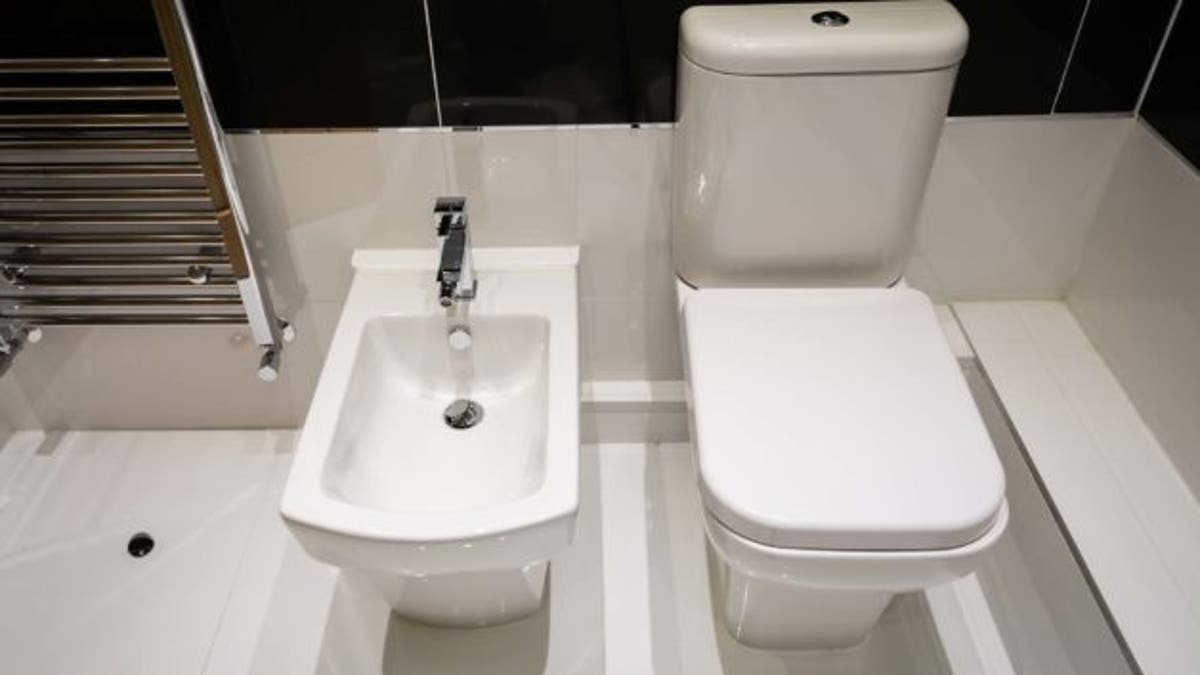
what-is-a-bidet
You may have seen them in bathrooms during trips abroad: a second porcelain trough, next to the toilet, that looks like a cross between a urinal and a sink. That thing there is a bidet, people! Perhaps you’ve seen real estate listings boasting “luxury master bath with bidet.” So what exactly is a bidet?
Simply put, a bidet is a bathroom fixture designed to clean your nether regions after you use the toilet. You sit, you turn on the faucet, and a stream of water does what you would otherwise take care of with toilet paper. Got it?
Bidets are extremely popular throughout much of Europe, but they’re still a rarity in the U.S. There are a number of theories on why the bidet never took off here. One is that during the great indoor plumbing revolution, bidets happened to be associated with French prostitutes. Another is that Americans are too prudish and/or practical to spend money on two bowel-related fixtures, particularly if space in the bathroom is tight. And then there’s also simply habit. We’ve always done it this way, so why change?
Nonetheless, bidets are slowly steaming into luxury markets. Acolytes say using bidets is more hygienic than using toilet paper, easier on the earth, and easier on your plumbing. No more toilet paper to clog up the drain! (Or less of it, certainly.)
More From Realtor.com
How much does a bidet cost?
These days, there’s a bidet for nearly every budget and space constraint. Here are your options, and how much they cost:
Stand-alone fixture: Bidets start around $250 and go up to $500–$700 for a higher-end model by Kohler or Toto. To install a bidet, count on spending around $200 plus an additional $20 for supplies, according to Homewyze. It uses your existing plumbing, so in total you can live la vie bidet for under $1,000.
Modern bidets
Washlet: If you lack the space in your bathroom for a separate fixture, you can replace your existing toilet seat with an electric one called a washlet, which will spritz water much like a bidet. Washlets are popular in Asia and cost around $300, although prices can rise to the thousands with additional features like a blow-dry.
Modern bidets
Spray attachment: An even cheaper option is to affix a water-spraying attachment to your toilet bowl for as little as $30 and up to $100–$200.
Modern bidets
Benefits of a bidet
Did you know the average American uses 50 pounds of toilet paper a year? Bidet maker Brondell calculates that a person spends $243 a year on toilet paper, but with a bidet you’ll save about $182 a year. Depending on whether you buy a bidet seat ($200 to $600) or bidet attachment ($40 to $80), it would take a few months to three years before your bidet has paid for itself in toilet paper savings.
So how much water does a bidet use? According to Coco bidet maker Biolife Technologies, a bidet uses an eighth of a gallon of water per wash. So it will raise your water bill a bit, but not much (compare that with a single toilet flush, which uses 4 gallons).
You may also want to factor in the labor and grief you’ll save from fewer clogged pipes. And while that’s not wrapped into your water bill, it does put a bidet’s water use into perspective.
Are bidets more hygienic?
Bidet fans swear they’re cleaner. But oddly enough, hardly any research has been done to verify this claim holds water. One 2005 study of elderly people in a nursing home showed that bidet use “improved their toileting experience,” yet a 2011 study revealed one surprising downside: “Habitual use of bidet toilets aggravates vaginal microflora, either by depriving normal microflora or facilitating infection of fecal bacteria and other microorganisms.”
In other words, that spray of water can deliver the wrong kind of bacteria from one end to the other, increasing your risk of an infection like a UTI.
Is this something home buyers want?
Although they may have cachet for the eco-conscious, real estate agents doubt the bidet will ever take off here in a big way.
“I have never had a client ask specifically for a bidet, and I have never had a client express satisfaction at seeing one while touring a prospective home to purchase,” says Andrea Evers of Evers & Company Real Estate in Washington, DC. “Most clients joke about it if they see one. Like, ‘Oh great, a bidet!’ or even, ‘What is that?’”
“In my 12 years as a broker this has come up, um, zero times,” says Jeffrey Welch of Brown Harris Stevens in Brooklyn, NY.
If anything has sales appeal in American markets, it’s washlets, says Evers.
“I have shown a few homes with those tricked-out Toto toilets that do a lot under the hood, shall we say,” she says. “And clients are much less scared off by those models.” She jokes that they are the bidet of the new age.
So if you’re bidet-curious, understand that it’s not likely to boost the value of your home. If that—along with a special form of cleanliness—is your goal, perhaps a washlet is the way to go.
The post What Is a Bidet? The Shocking Truth About This Exotic Bathroom Upgrade appeared first on Real Estate News & Advice | realtor.com®.